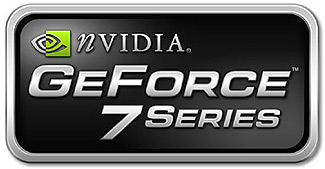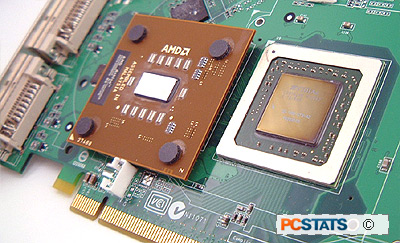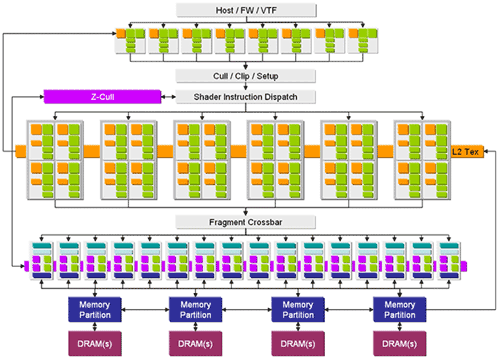Summer has come, the birds are singing, the
leaves are green, and we have a new graphics chipset from nVidia to write
about. Though the prolific 6 month product cycles adopted by nVidia and bitter
arch-rival ATI seem to have slowed, it's good to know that the march of progress has
not stopped entirely.
The GeForce
7800GTX chipset has a simple purpose; to catapult nVidia back onto the 'fastest,
most expensive videocard' throne. Obviously, it and its inevitable series of
ultra-extreme-pro-express offshoots will make up the high-end of nVidia's
next wave come christmas time, but for now it's a lone gunfighter with sights set
squarely on ATI's X850XT PE videocard.
nVidia has stated that the 7800GTX
GPU should make any modern game smoothly playable at 1600x1200 with 4XAA when
partnered with a current high-end processor. This is
not the most ambitious goal in the world, since today's top
level videocards can more or less accomplish the same feat.
The additional eye-candy that games like Doom3,
Half-Life2 and Splinter Cell: Chaos Theory can load on results
in  multiple complex operations needing to be performed on each
and every pixel though, which can seriously stress current generation
cards. This is only going to get more pronounced as game manufacturers
try to top each other and their own previous releases.
multiple complex operations needing to be performed on each
and every pixel though, which can seriously stress current generation
cards. This is only going to get more pronounced as game manufacturers
try to top each other and their own previous releases.
The modern videocard is a balancing act then, between having multiple vertex
units and pixel pipelines to provide the raw speed needed to render
and fill huge polygon counts and the need to perform advanced transform and
lighting effects on each pixel in a single pass to maintain that
speed. It's kind of like trying to drive at 400Kmph while minutely
examining each and every daisy growing on the side of the road.
While you wrap your head around that metaphor, we can tell
you that nVidia has added features and improvements that make advanced
transform and lighting effects much less costly to overall performance with the
7800 GPU.
 |
| The 'G70' Geforce 7800GTX core next to an AMD AthlonXP 3000+ CPU. Nvidia's GPU is almost 4 times the size of AMD's CPU. |
The companies engineers have also added two new anti-aliasing modes, some
extra circuitry and a bunch of other nifty features into a package which
uses less power than current generation GPUs. A pipe-dream? Nope, a
$599USD reality, as of last week. Let's take a closer look at
the technology...
The GeForce 7800GTX
chipset
The 7800GTX GPU (formerly known as 'G70') is
based quite closely on the Geforce 6800Ultra graphics processor. That said, there are
several significant improvements and tweaks which should add up to a large
overall performance boost.
Let's get the nuts and bolts out of the way
first. The key architectural differences between the G70 and the 6800Ultra start
with the size and manufacture of the GPU. The G70 is based on TSMC's 110nm process
and incorporates a mind-boggling 302 million transistors. To put this in perspective,
an Athlon 64 FX-55 has only 105.2 million transistors!
The nVidia reference design for
the 7800GTX runs at 430MHz to start with, and uses 256MB of GDDR3 memory clocked
at 1.2GHz. This provides the reference card with a total bandwidth of
38.4GB/s.


